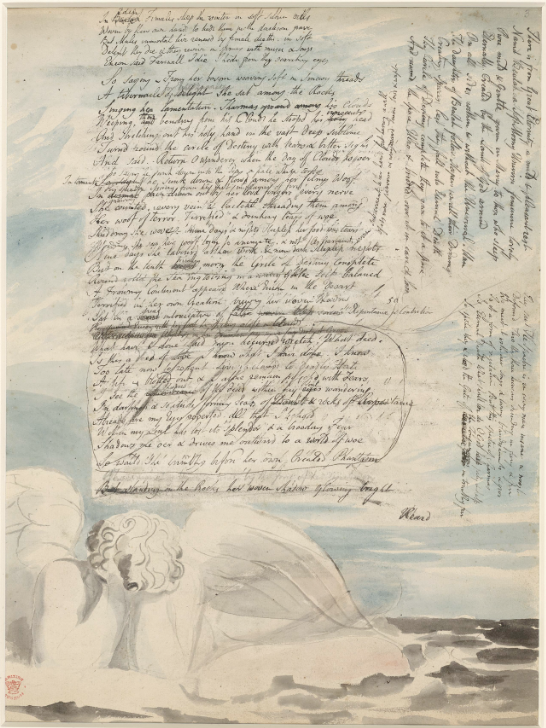Clarity is elusive—a particularly ironic characteristic of a manuscript that Blake so heavily marked up with instructions on how to read it.
Of course, reading is one thing. Encoding is another.
Check out the opening paragraph of Vala, or the Four Zoas:

First, Blake provides several sets of line numbers to determine the final poetic sequence. Second, lines are drawn connecting inscriptions to spaces on the page.
As documentary editors, we are committed to the physical artifact, not Blake’s final intentions. So, of course, we don’t alter our transcription to “complete” Blake’s revisions. But we are interested in describing certain textual relationships between discrete physical inscriptions that seem to be working together to complete an identifiable act of composition. (We do it all the time with substitutions, deletions, insertions, etc. that are often multi-step acts of revision.)
But the marks pointed out in the example above are of a different variety—numbers and drawn lines that are not “content” but rather compositional instructions.
An outside observer might suggest we just encode the numbers into the lines of content and skip the drawn lines altogether, or include them in a note. But then I would suggest flipping a few pages to Exhibit B:
Oh, yeah.
The issue must be dealt with sooner or later—textual relationships between discrete inscriptions. We have a few options vis-à-vis TEI. Fearless Project Coordinator Laura Whitebell recently turned us on to <metamark>, which gives us a lot of options for encoding the actual instructive marks, like the drawn lines or numbers. However, we’re still struggling with how to encode the connection/relationship across textual space (“zones”). Is it enough to use <metamark>’s @target and connect a mark to a general zone? Or can we be / do we need to be more specific, on a line level? What combination of internal targets and ID’s would make the most sense? Do we need to worry about this at all?
Each week, working on Four Zoas usually results in one answer and a few dozen more questions.
In any event, I think Blake would have dug track changes and MS Word comments.
—


